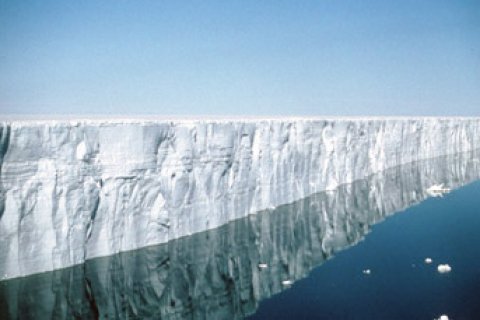Rapid rise in sea level not solely dependent on greenhouse gases

Twenty to thirty million years ago, when CO2 concentrations in the atmosphere were similar to today’s levels, the Antarctic ice cap underwent cycles of enormous growth and shrinkage. The difference between the volumes of ice could be equivalent to what is currently the entire East Antarctic ice sheet. This was concluded by an international group of scientists, from institutions including Utrecht University and the University of Southampton. Their findings were published in the authoritative journal PNAS on 27 March 2017.
Thirty million years ago, CO2 concentrations in the atmosphere were roughly as high as in the pre-industrial era, a little over 100 years ago. In approximately 10 million years’ time (hence, up to about 20 million years ago), the CO2 concentrations gradually increased to levels that are expected to be witnessed at the end of this century, as long as agreements set out in the Paris Agreement are adhered to. A higher concentration of greenhouse gases will result in a warmer climate, which in turn, will cause large ice caps to melt.
Cycles of approximately 100,000 years
That being said, research conducted by an international group of earth scientists has revealed that the Antarctic ice cap was subject to cycles of enormous growth and shrinkage in the period between 20 to 30 million years ago. These cycles spanned approximately 100,000 years, with the Antarctic gaining and losing huge ice caps – equivalent to the entire modern-day East Antarctic ice sheet. These changes in size also result in enormous differences in sea level. After all, the only destination for all of the melted ice is the oceans.
Extremely rapid changes
Dr Diederik Liebrand, primary author of the publication and earth scientist at the University of Southampton: ‘Our research shows that even slow, naturally forced climate change is capable of driving rapid large-scale changes in ice volume in Antarctica – and therefore global sea levels’.
Geological processes
Dr Lucas Lourens, an earth scientist at Utrecht University who was closely involved with the research, adds: ‘We do not yet know exactly how the ice cap could melt and grow so quickly. We suspect that it has to do with geological processes: over time, Antarctica was subject to height differences of around 600 metres. Previous research has also demonstrated that the growth and shrinkage of ice caps heavily influences local temperatures, resulting in feedback loops and therefore accelerated shrinkage and growth’.
Not just a lump of ice
‘Increasingly we are understanding that the Antarctic ice cap is not some enduring monolithic block but a much more slippery ephemeral beast – and the implications of that realisation for the future of Antarctic ice sheets in a very rapidly warming world have not escaped us’, concludes Liebrand.
Publication
Diederik Liebrand et al., Evolution of the early Antarctic ice ages, PNAS 2017; published ahead of print March 27, 2017, doi:10.1073/pnas.1615440114
Contact
Prof. dr. Lucas Lourens, Utrecht University, L.J.Lourens@uu.nl, +31 30 253 5173

